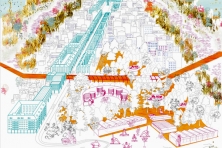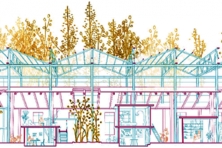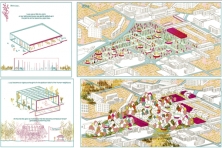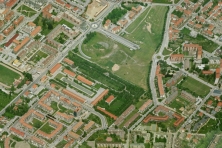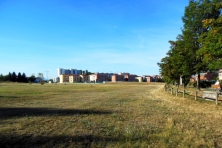Lucy in the Woods with Diamonds
Cuneo (IT) - Special Mention
TEAM DATA
Team Representative: Francesco Lenzini (IT) – architect
Associates: Martina Corbella (IT), Francesca Luci (IT), Margherita Marri (IT), Andrea Mologni (IT), Jacopo Rosa (IT) – architects
Via don Z. lodi, 10/A, 42121 Reggio Emilia (IT)
+39 338 805 3263 - arch.lenzini@hotmail.com
See the complete listing of portraits here
See the site page here

F. Lenzini, M. Marri, A. Mologni, J. Rosa, F. Luci & M. Corbella
INTERVIEW
Click on the images to enlarge
1. How did you form the team for the competition?
I met this group of talented students at the Politecnico di Milano in a Design Studio that I held with Mauro Baracco and Michela Bassanelli. It was an extremely positive project experience on a similar topic. When Europan 14 was launched the same students contacted me and we got together to form this team.
2. How do you define the main issue of your project, and how did you answer on this session main topic: the place of productive activities within the city?
“Lucy in the wood with diamonds” is a biodiversity-based project. It is conceived as an incubator to preserve and increase the natural richness of Cuneo’s landscape, amplifying the presence of vegetation within the city. At the same time the proposal extends the potential and attractiveness of Cuneo through the involvement of new economic and social opportunities that we place as the current basis of an authentic productive city.
3. How did this issue and the questions raised by the site mutation meet?
We conceived the project as an organic process linked to the natural growth of the urban forest. The strategy develops through time in four different phases respectively characterized by specific functions that involve differentiated users due to the greater attractiveness of the area in terms of daily and seasonal use. We firmly believe that this attitude to change over time is the strongest aspect of our proposal.
4. Have you treated this issue previously? What were the reference projects that inspired yours?
We can say yes. During the design studio in which we met, we dealt with the topic of the productive city by studying the current situation of Imperia, an Italian coastal town near Genoa. Our approach seeks to minimize the footprint on the ground, reusing existing buildings and designing light integrated structures while improving the quality of the environment. The work of Lacaton and Vassal, always oriented to reuse the existing buildings, inspired us, as well as the projects of Ishigami and Sejima for their light pavilions placed in nature.
5. Urban-architectural projects like the ones in Europan can only be implemented together with the actors through a negotiated process and in time. How did you consider this issue in your project?
The idea of having a four-phase project is strongly linked to this topic. The possibility of having different steps supports the possibility of discussion with the different actors while the project is developing. This enables the project to have more flexibility and adaptability regarding the changing conditions of a long-term process.
6. Is it the first time you have been awarded a prize at Europan? How could this help you in your professional career?
It is the first time we have been rewarded at Europan. It is always very gratifying to be among the winners of such a prestigious competition. Obtaining a Special Mention means to be part of an international panorama and gives us a new professional profile.
